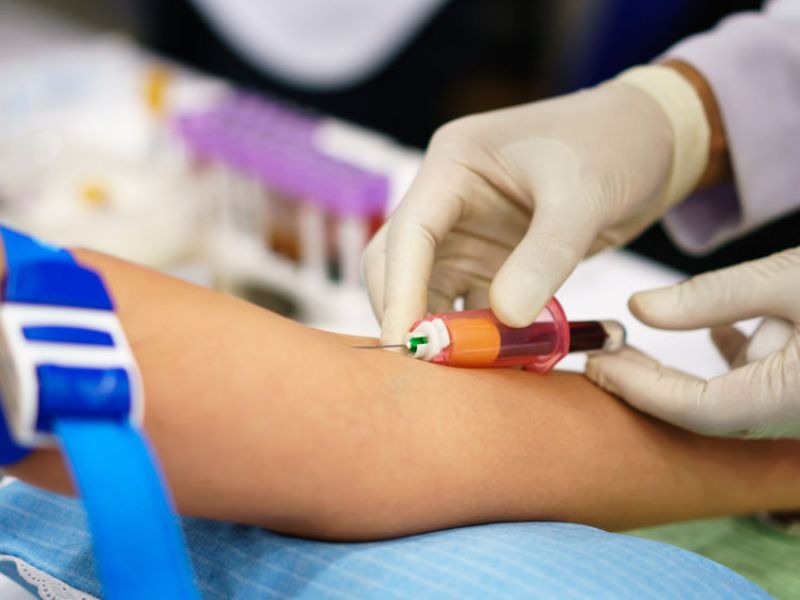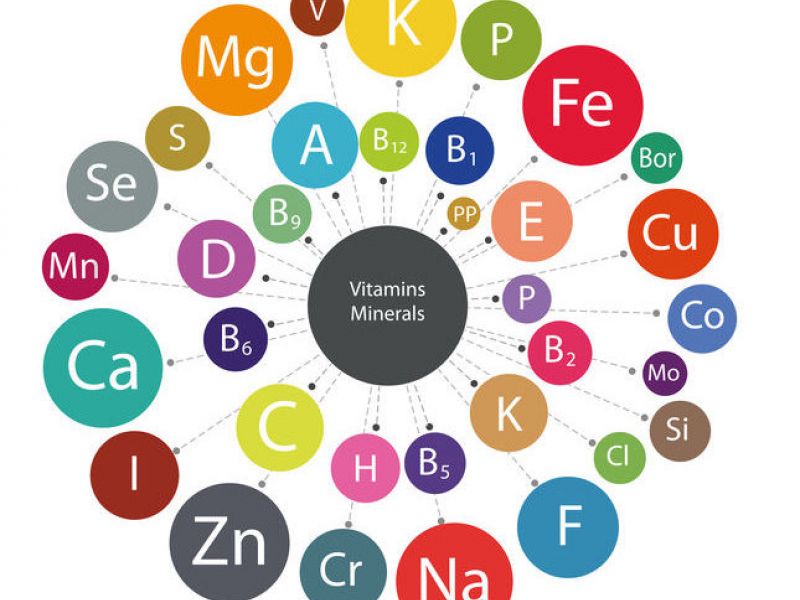Advanced blood analyses
What do my lab values mean? Part 9
Is your body sufficiently supplied with the most important vital substances? In order to find this out, an extended blood analysis is made from whole blood in our practice.
What am I missing?
"Doctor, I'll bring my blood values with me to the examination! My internist has already examined everything, she has ordered a complete blood count," says Mrs. Helga F. when she registers for her consultation in our practice. Nevertheless, we still take blood samples. Why?
Laboratory examinations, which are usually ordered by general practitioners and internists, mainly examine the known risk factors for cardiovascular diseases: Blood count, blood lipids, blood sugar, liver and kidney values. We are not satisfied with that. We not only want to know whether there is a serious cardiovascular risk, but also whether the body is well supplied with the most important vital substances.
With every car you buy, you know what kind of performance it is equipped with. If the engine is weak, you have to accept that going uphill is slow and overtaking is a risk. The performance of our body depends to a large extent on the supply of micronutrients. Anyone who is professionally or privately challenged needs energy reserves. The aim of our laboratory tests is to find out whether and to what extent reserves are available for performance, resilience and the ability to regenerate. These factors are strongly related to whether we have sufficient vitamins, minerals, certain amino acids and hormones in our blood to transport them through the body. Blood is the fluid body tissue that distributes all vital substances to the other tissues and organs. If a deficiency can be found in the blood, this automatically exists for all other tissues as well.
Blood collection
Normally, a blood sample should be taken on an empty stomach and between 7 and 10 am. This is especially true for blood values that provide information about the metabolic situation and for values that change with the biorhythms, such as thyroid hormones. In order to be able to measure the most diverse parameters, several blood tubes are necessary. They contain different solvents that keep the blood fluid. This sometimes seems threatening when our lab technician arrives with 5 or 6 tubes at once. "Is there any blood left for me?" is a frequently asked question. Don't worry, even if you take 5 - 6 blood tubes, that's only about 1% of the body's total blood volume, which can be regenerated within a few hours. Moreover, the modern blood collection cannulas are so well ground that the prick hardly hurts any more. This also applies to children!
Immediate analysis
Immediately after the blood sample is taken, the red and white blood count, the inflammation value CRP, the blood sugar and the blood sedimentation reaction are determined in our own laboratory. For all further analyses, the blood tubes are forwarded to specialised laboratories. Blood count and inflammation values can already indicate serious chronic problems and be indicators for a rapid initiation of therapy.
Urinalysis
In addition to these values, we also analyse the urine immediately. Unlike many other doctors, we also pay close attention to the pH value of the urine. This value reflects the acidity and is therefore a first indicator for a possible metabolic overacidification. This is very common in people who are under a lot of stress and/or eat a "modern" diet rich in carbohydrates and sugar. This can already be a first indicator that an alkaline powder to buffer the excess acid is useful.
Preventive check-up
The preventive medical check-up paid for by the Austrian health insurance companies contains only very few laboratory values: blood count, blood sugar, cholesterol, triglycerides, the liver value Gamma GT and the urinalysis. These values can be used to determine the risk of the following diseases: Anaemia, too high blood lipids as a risk for the heart, diabetes and liver stress. The background for this very limited examination programme is that strongly propagated drug therapies are available for these diseases. However, these values say nothing about whether someone is able-bodied or feels ill, whether biorhythms such as sleep during the night and freshness during the day are functioning, whether allergies or food intolerances are making life difficult or whether someone is suffering from hormonal disorders such as thyroid dysfunction or menopausal symptoms.
Extended laboratory profile
- Micronutrients in whole blood
The minerals potassium, magnesium, copper, zinc, selenium and iron play a key role in many metabolic processes. We have these substances determined from whole blood. Normally they are determined from the serum (liquid part of the blood). The serum analysis only reflects a snapshot of the electrolyte balance. The analysis in whole blood makes it possible to determine the stores and thus the reserves of the cells. Through the whole blood analysis we can determine the real deficiency or surplus of one of these minerals. - Vitamins
Everybody knows how important vitamins are for our health. Due to over cultivation of arable land and modern processing of food, our supply of vitamins and minerals has been at least halved in the last decades. Stress increases consumption. We measure the vital vitamins B12, B9 (folic acid) and D in every patient, and other vitamins if deficiencies are suspected due to complaints.
The importance of the supply of the above-mentioned vitamins has been increasingly discussed in recent years. As everywhere, there are the most diverse reactions to this discussion: head in the sand - doesn't concern me or massive overdosage. Since every person reacts differently to the intake of vitamins, only blood analysis provides information about a professional and body-appropriate supply.
- Micronutrients in whole blood
Summary
Usual laboratory tests detect only a small part of risk factors and disease-relevant parameters. Even if the family doctor or internist has examined "everything": there are still possibilities to get to the bottom of certain deficiencies or causes of disease with modern laboratory methods. In our practice, we try to carry out laboratory diagnostics that are as targeted as possible on the basis of anamnesis and pulse diagnosis. This provides valuable information for an effective therapy. Health and vitality is the goal.





We look forward to your feedback!